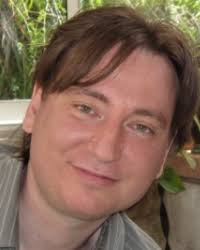The life cycle of a shape: transformations between the geometric representations used in Computer-Aided Design and Engineering
Tom Cashman (TranscenData Europe Limited, Cambridge, UK)
Abstract
We might like to imagine that a shape can be designed, analysed and then manufactured, in that order, with a single geometric description. In fact, the journey of a CAD model is often much more complicated than that: manufactured parts are reverse-engineered, simulation happens both before design and after manufacture, and there are typically many different versions of a design at different fidelities or for different recipients.
In this talk, I will give an overview of the many geometric representations used for a single physical artefact as part of an industrial process. Drawing on the experience TranscenData have gained in transforming customer models, we will discuss state of the art methods for automatically converting between those representations, and the missing links that result in manual work to perform a conversion. We will cover the demands on meshes used for high-performance simulation, and some implications for the geometry that is meshed. I will conclude by examining the potential role and contribution of models built for Isogeometric Analysis, by asking whether their value lies in providing a single unified description of shape, or whether they stand as complementary geometric representations with their own conversion requirements.

Short biography
Tom Cashman is a software engineer at TranscenData Europe Ltd. He studied Mathematics and Computer Science at the University of Cambridge, completing his PhD in 2010. His doctorate developed the first subdivision extension of NURBS surfaces, and was supervised by Prof. Neil Dodgson. The resulting thesis was runner-up in the British Computer Society's Distinguished Dissertation competition and received the Eurographics PhD Award. Tom spent two years as a postdoc at the University of Lugano, before returning to Cambridge to work with TranscenData, where his role combines software development with responsibility as the technical lead on R&D projects in geometry handling.
From sampling to fluid dynamics through geometric discretization
Mathieu Desbrun (California Institute of Technology, Pasadena, USA)
Abstract
The notion of Voronoi diagram involves a rather trivial geometric construct that has found broad applications in a variety of scientific fields.
In this talk, I will discuss an extension (called power diagram) that has recently been shown to be particularly relevant in the context of graphics applications in 2D and 3D, including sampling patterns, self-supporting masonry structures, and fluid dynamics. I will also provide a glimpse of the important role of geometry in physical simulations of all sorts, including Molecular Dynamics and Magnetohydrodynamics.

Short biography
Mathieu Desbrun is the John W. & Herberta M. Miles Professor at the California Institute of Technology (Caltech), where he is the head of the Computing & Mathematical Sciences department and the director of the Information Science and Technology initiative. He leads the Applied Geometry lab, focusing on discrete differential modeling—the development of differential, yet readily discretizable foundations for computational modeling—and a wide spectrum of applications, ranging from discrete geometry processing to solid and fluid mechanics and field theory. He is also the recipient of an ACM SIGGRAPH New Significant Researcher award.
From discrete geodesics to intrinsic Delaunay triangulations
Ying He (Nanyang Technological University, Singapore)
Abstract
Measuring geodesic distance on polyhedral surfaces is a fundamental problem of computational geometry. The existing methods can be roughly classified into two categories: computational geometry based and PDE based. The former is able to compute the exact geodesic distance; however, it is computationally expensive. The latter is efficient and works on a wide range of geometric domains, but, it produces only the first-order approximation, which is poor on meshes with irregular triangulations. In this talk, I will first highlight some of the recent developments on graph-theoretic algorithms, which solve the discrete geodesic problem from a unique local perspective: these algorithms break down the problem into significantly smaller sub-problems, and elegantly enable information reuse. Moreover, they do not require any numerical solver, and are numerically stable and insensitive to mesh resolution and tessellation. Then, I will introduce intrinsic Delaunay triangulation (IDT), which is a natural extension of Delaunay triangulation to 2-manifold meshes. Our efficient geodesic tools allow us to construct the IDT in empirically linear time. Finally, I will show some applications, such as digital painting, surface parameterization, and discrete Laplace-Beltrami operator.

Short biography
Ying He is currently an associate professor at School of Computer Engineering, Nanyang Technological University, Singapore. He received the BS and MS degrees in electrical engineering from Tsinghua University, China, and the PhD degree in computer science from Stony Brook University, USA. His research interests fall into the general areas of visual computing and he is particularly interested in the problems which require geometric analysis and computation. His recent work has focused on discrete geodesic and its broad applications.


